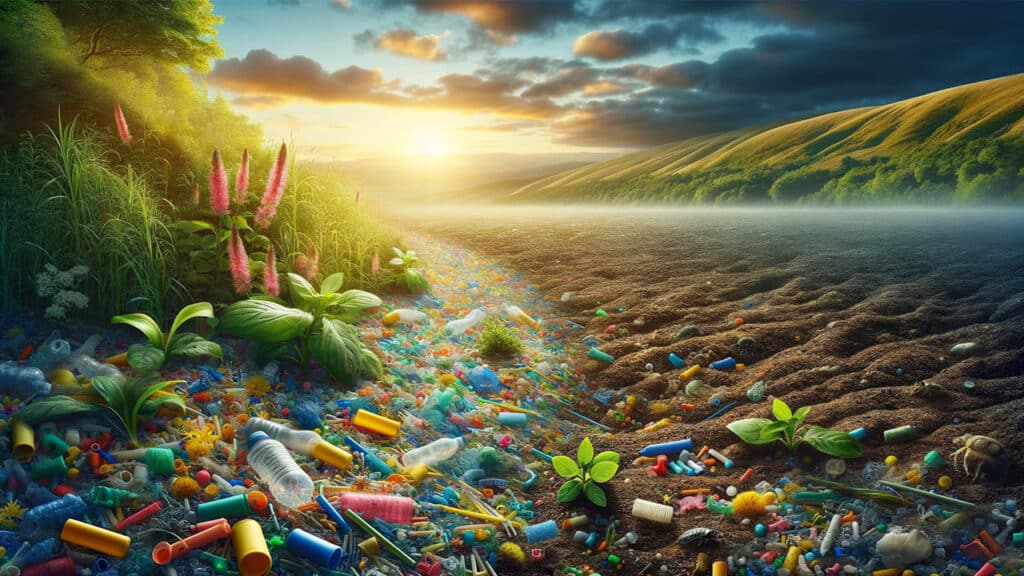
Microplastics, tiny fragments of plastic less than 5 millimeters (about 0.2 in) in size, have become a growing topic of conversation in recent years. Since 1950, about 8 million tons of plastic have been produced, but only about 10% of that has been reused and recycled. The rest of that plastic has found its way to landfills, the ocean, and roadsides, to name a few. Primary microplastics are plastic materials designed to be small in order to perform a specific function. Think about the exfoliating beads you see in face cleansers, or the grittiness you can sometimes feel in your toothpaste. Secondary microplastics come from the breakdown of larger plastic materials: water bottles and storage tubs are good examples. Through wear and tear, the effects of the sun, wind, and water, larger plastic items break down into tiny pieces. Most plastics that have been produced take thousands of years to fully decompose; so in the meantime, those tiny plastic pieces end up in the air we breathe, the water we drink, the food we eat, and the soil beneath our feet.
Most microplastic studies have focused on the ocean. How do microplastics affect marine life, and in turn, how would that consequence affect us? Research has shown that microplastics are often absorbed and ingested by sea creatures, and if they survive having the plastic inside of them, and do not become ill or die from the toxins that might have come along with the plastic pieces, then those toxins and fragments stay within the animal. When that animal is eaten, the plastic moves up a notch in the food chain; the amounts of microplastic present within a creature’s tissues increase the further up the food chain you go. Microplastics have been found in people, and studies have found microplastics in our food, honey, and sugar. They are everywhere, and a recent study published in the Science of the Total Environment journal in January of this year revealed that microplastics had been found in soil samples collected more than seven meters (23 feet) below the surface. The samples had originally been collected as part of an archaeological excavation in the 1980s, and, until now, the samples were thought to be from stratigraphic layers untouched by human activity.
The authors of the study caution that their research is in the early stages, but for archaeologists, this development might result in seismic changes to the field. Preserving prehistoric and historic resources in situ, that is, in their original state, as opposed to digging them up or moving them elsewhere saves time and resources. The idea is that being encased deep within the earth will preserve the resource for a long time, but this research presents the distressing notion that microplastics have been contaminating archaeological sites for decades. Why are microplastics a problem in soils? Not only are they ingested by soil-dwelling animals and absorbed by vegetation, but the presence of microplastics can alter the chemical and physical composition of the soils and sediments themselves. As a result, sites, features, artifacts, and remains buried underground may deteriorate more rapidly, and the chemicals released from the microplastics as they decay could potentially compromise radiocarbon dating and trace element analyses.

The researchers emphasize that soil is often not studied holistically as a complex ecosystem. Archaeology as a field tends to view soils and sediments solely as the casings surrounding the good stuff, and not as an entity that acts on and is acted upon by the artifacts and ecofacts humans leave behind. In order to fully understand how the presence of microplastics will affect preservation, more research must be performed on soil as an ecosystem, taking into account its physical, chemical, and biological components together. Soils are unique in that they can change from one kind to another, if the environmental factors change. Studies on microplastics in our oceans, our air, and our food are important, and should continue. The consequences of microplastics in our soils, while still relatively unknown, are consequences all the same. More attention should be focused on figuring out exactly what effect those consequences will have.
